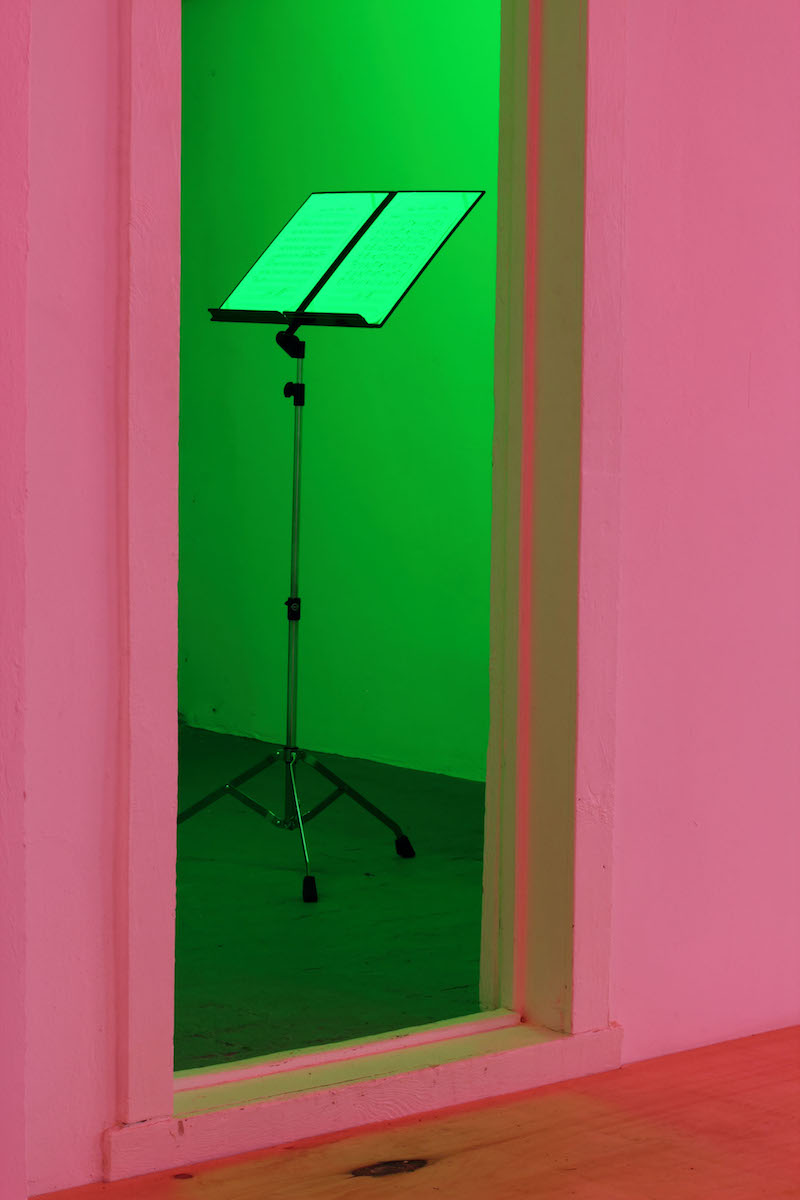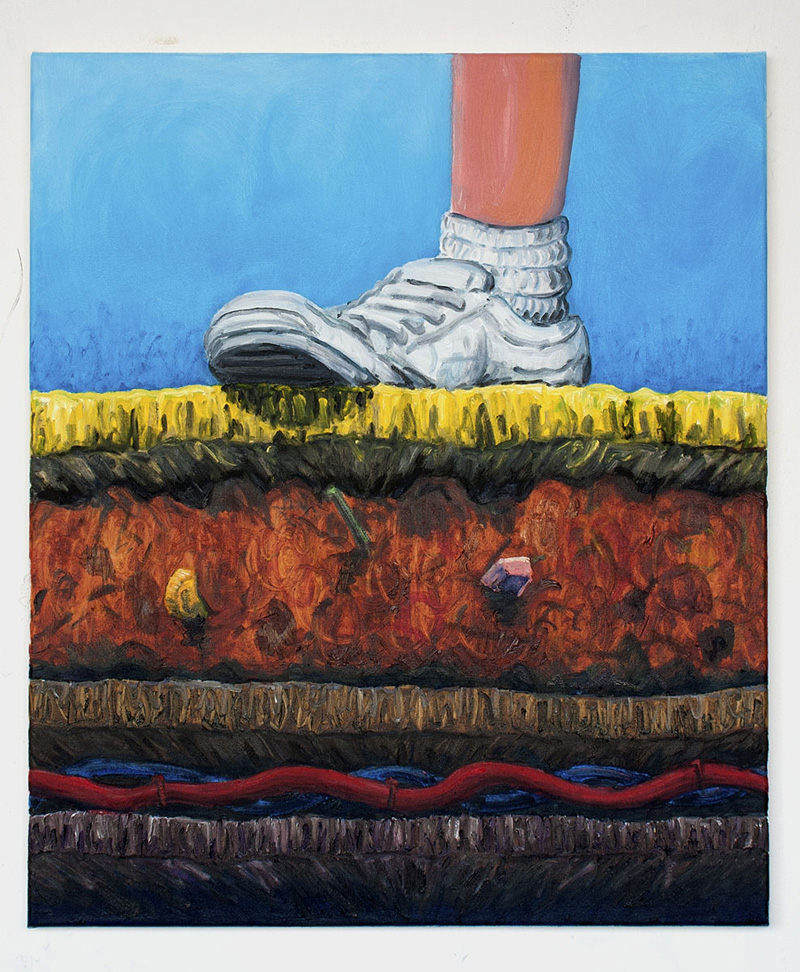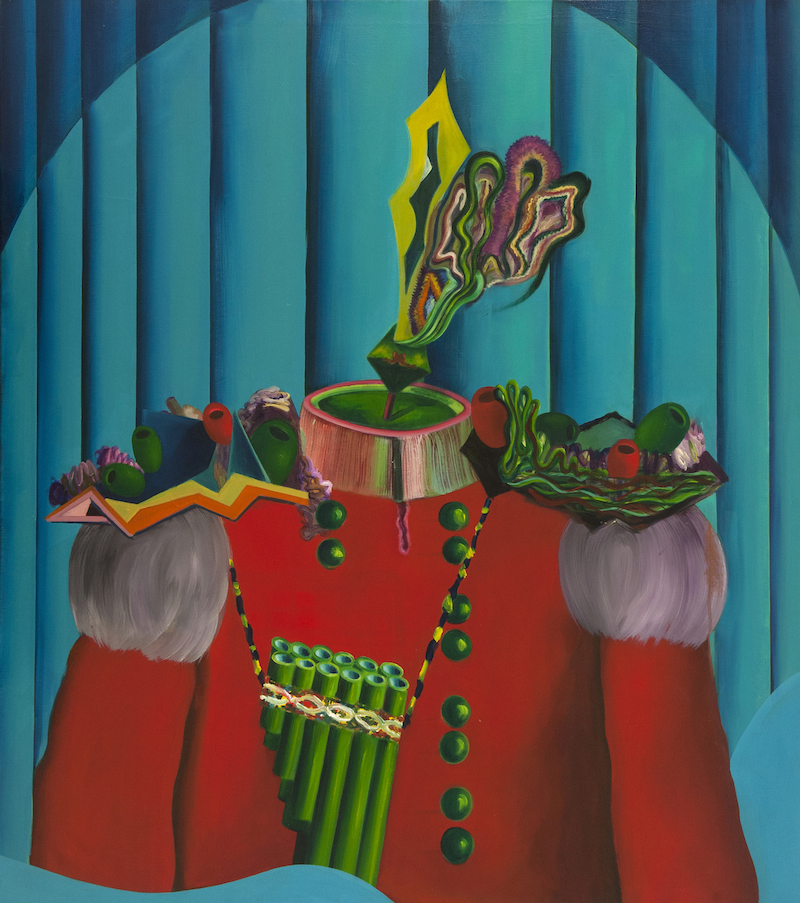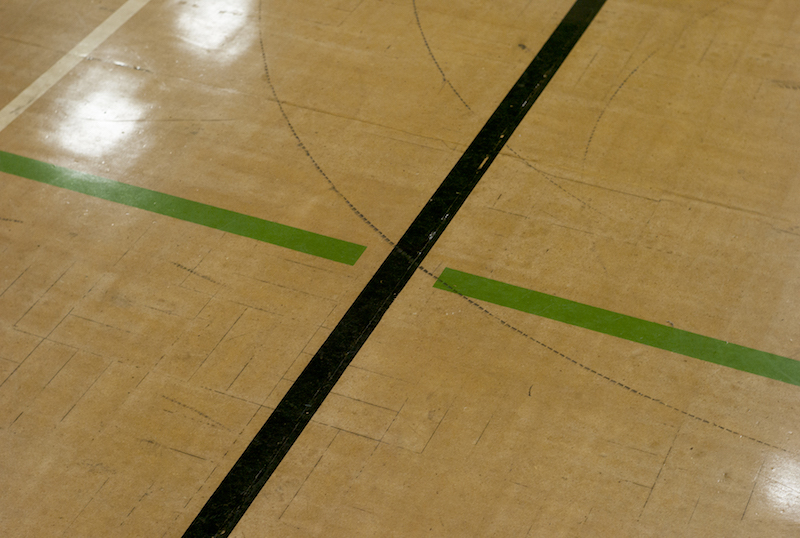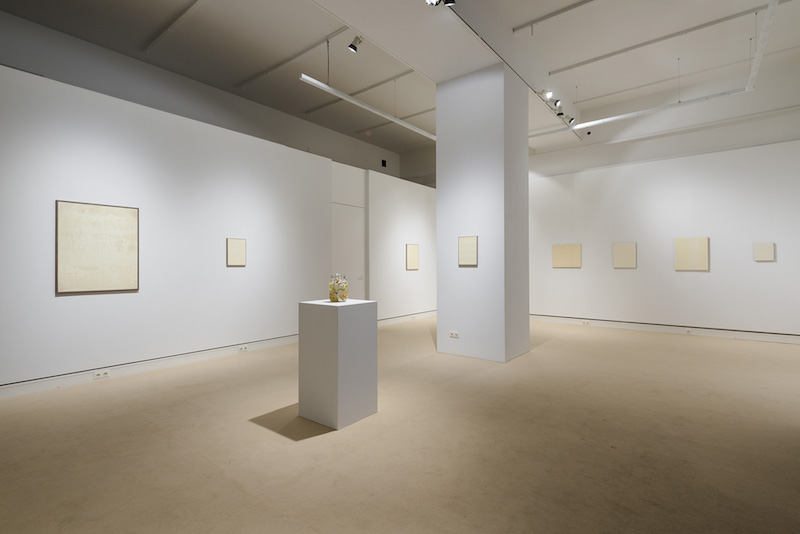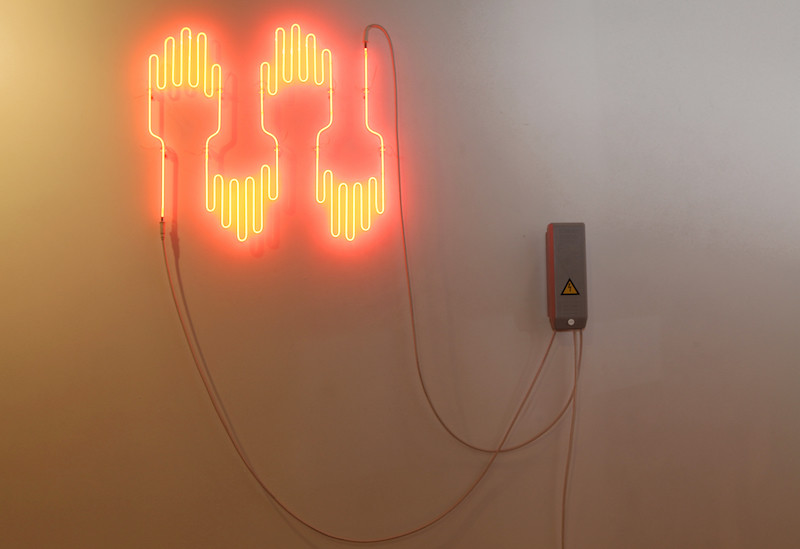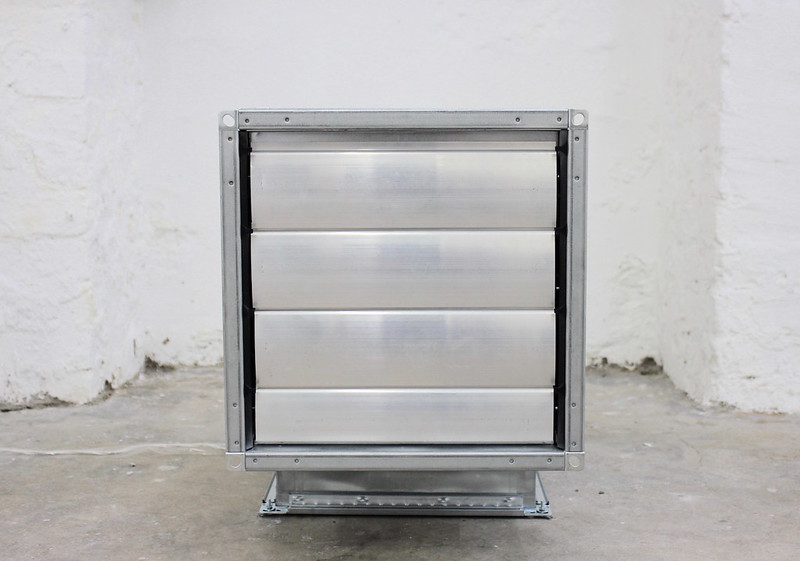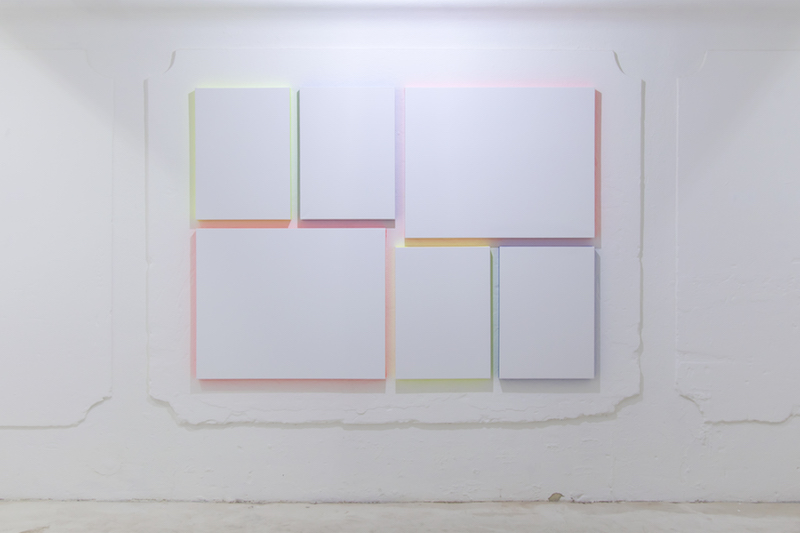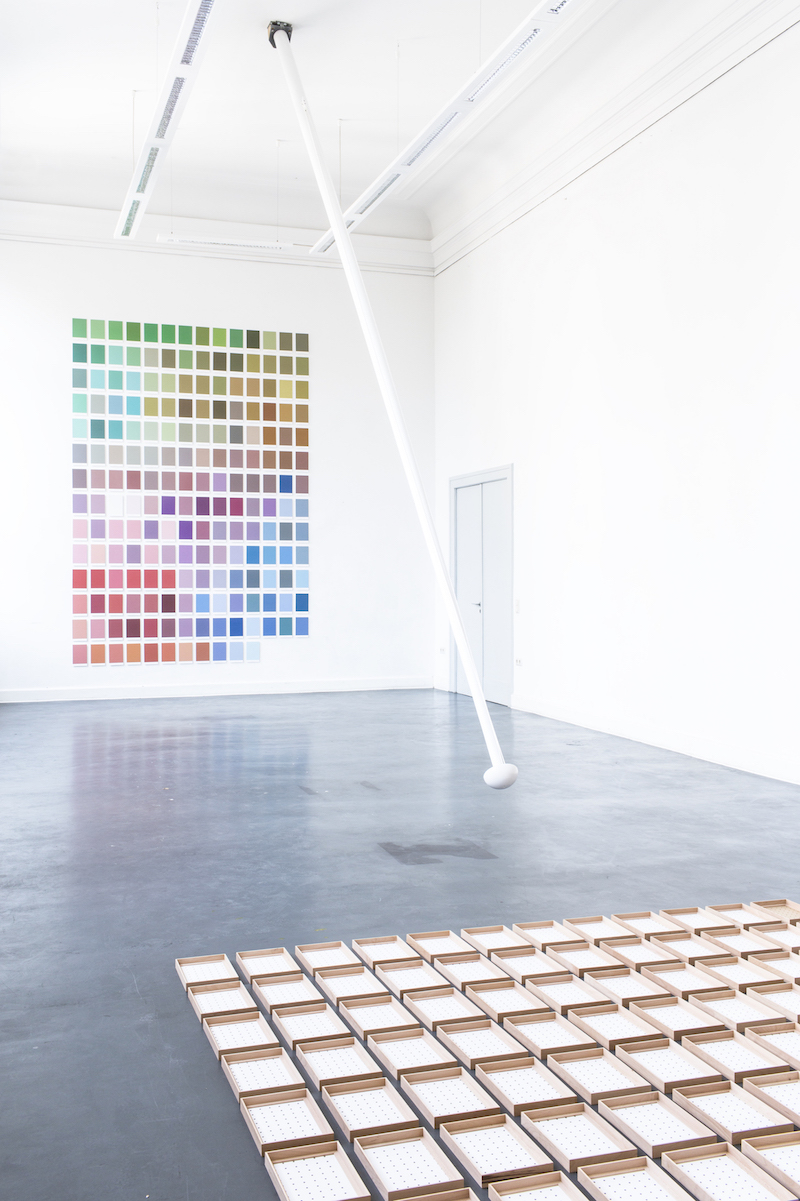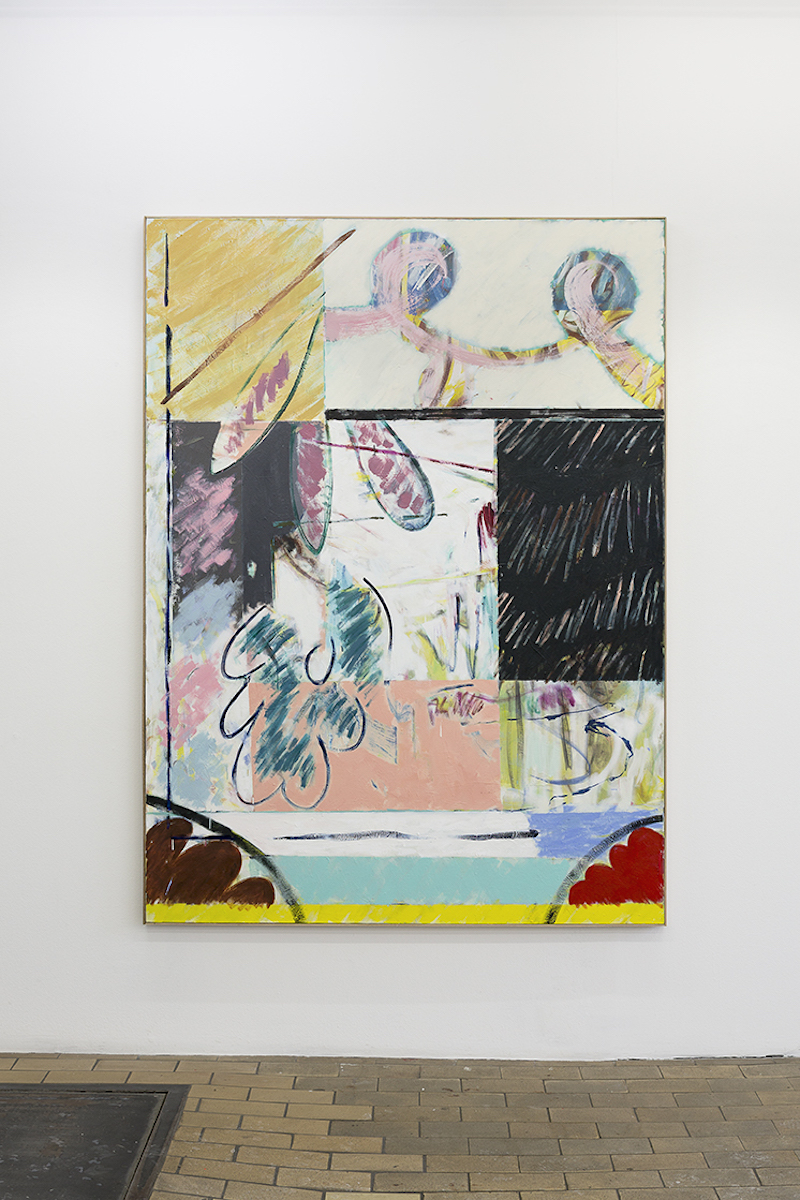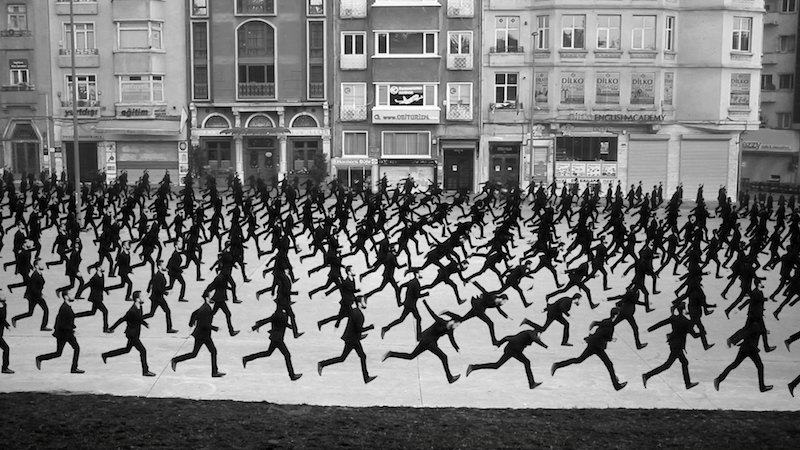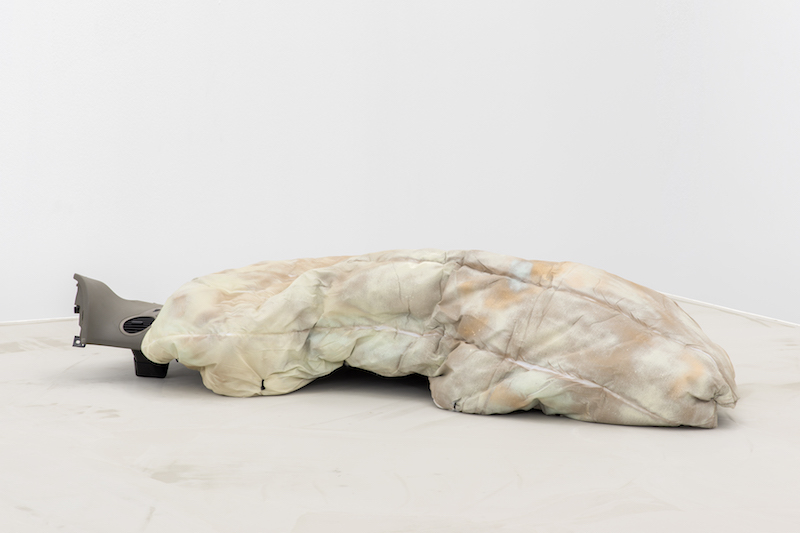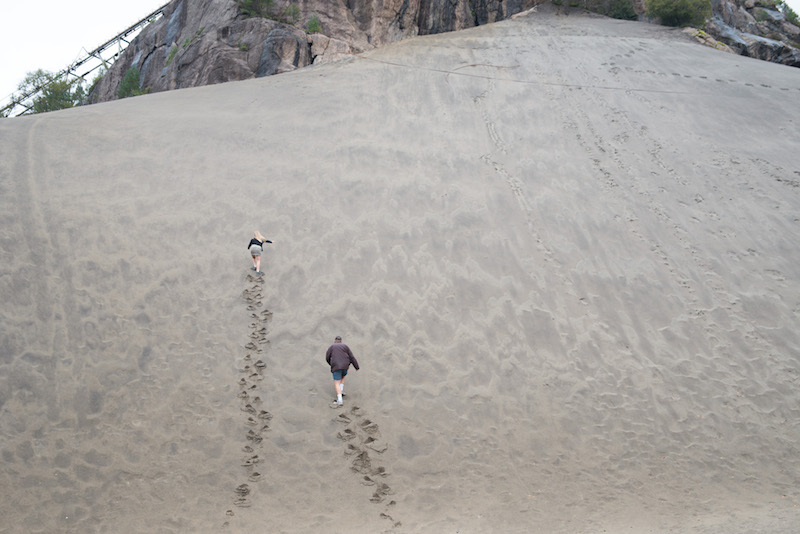
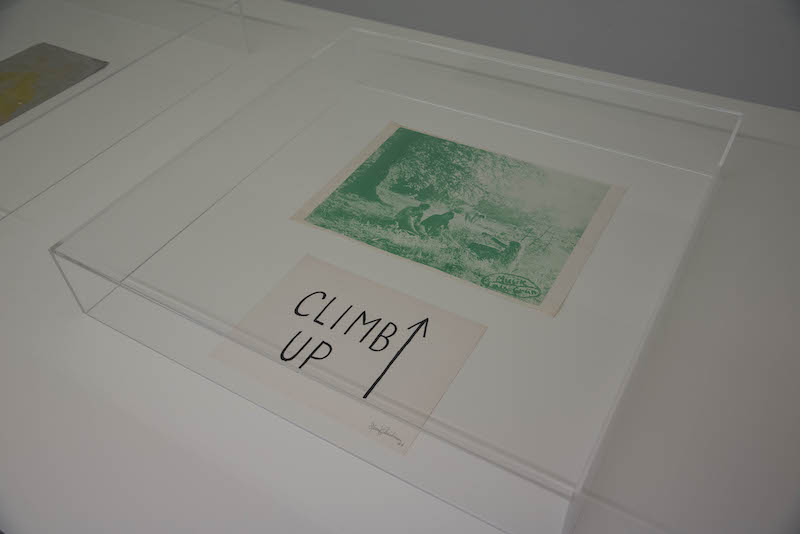
Curator Nico Anklam and curatorial assistant Mai Dengsøe Hansen during the performance Iteriations in VELFERDEN (August 2016), photo © Hans Edward Hammonds;
Two paperworks by Henning Christiansen at Kunsthal 44 Møen, photo © Thomas Gunnar Bagge
"Henning isn't a member of FLUXUS. Henning is FLUXUS"*, the Danish artist Bjørn Nørgaard wrote about his friend and artist colleague Henning Christiansen, who passed away in 2008 but left a giant archive of FLUXUS artefacts and a legacy of experimental music compositions. For Christiansen life and art merged fluently – he dedicated his practice to nature, its sounds and colours. "Unlike the complexity of musical modernism so far, my vision thus tends towards extreme simplicity"**, he stated, envisioning a transformation from complex to pure, from eye to ear, from visual to auditive.
Having established an isolated and rural, but nonetheless fruitful artist community on the Danish island of Møn, Christiansen, his wife Ursula, Nørgaard and the curator René Block jointly founded what is known today as Kunsthal 44 Møen – an ambitious art institution that is located just across the house of the Blocks and Christiansens. The Berlin-based curator and art historian Nico Anklam, who teaches art theory at Universität der Künste in Berlin, has been involved in the institution's exhibition and research making for a few years, and is currently organising a project that reflects Henning Christiansen's notions on nature and its affect on language through a small selection of Christiansen's art works in an exhibition at the Kunsthal in Møn and through a travelling performance program with international artists.
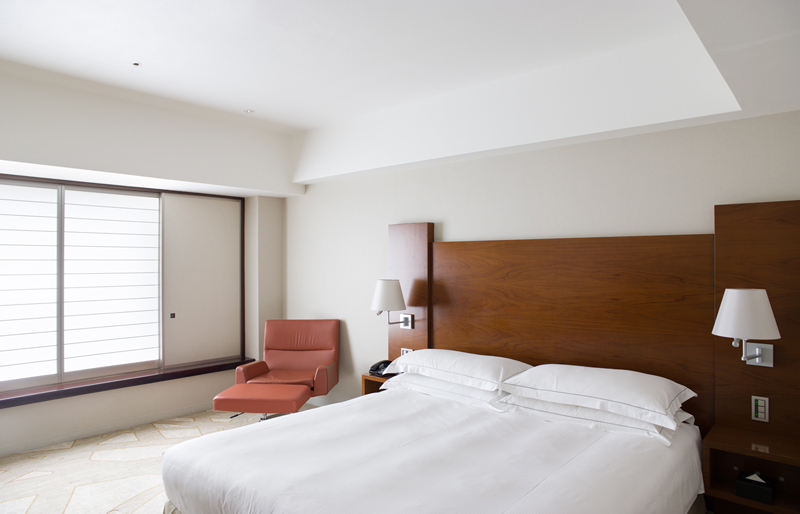
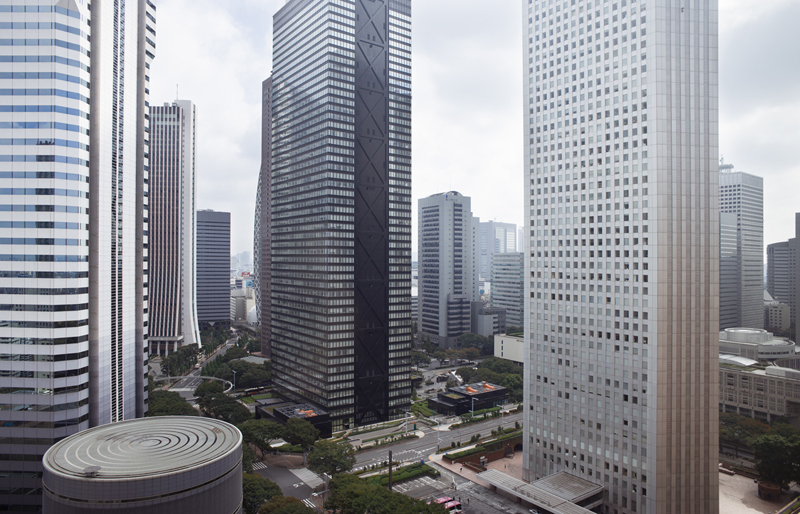 Tokyo HILTON hotel room and view in "Standard" © Roger Eberhard
Tokyo HILTON hotel room and view in "Standard" © Roger Eberhard

